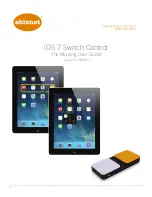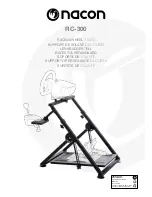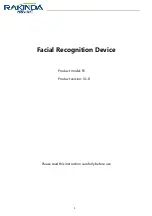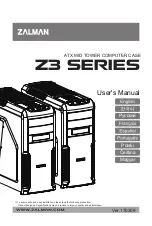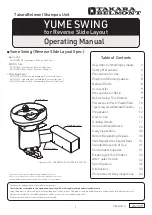
VRLA Installation, Operation & Maintenance Manual
2 Subject to revision without prior notice. E.&.O.E V2.3
Important Safety Instructions
Please read this installation, operation and maintenance (IO&M)
manual carefully. All VRLA cells and batteries from Narada are
safe when handled and operated in accordance with the
precautions and recommendations outlined in this document.
ONLY PERSONNEL TRAINED IN THE SAFE HANDLING OF
BATTERIES AND OTHER LIVE ELECTRICAL EQUIPMENT
SHOULD BE ALLOWED TO WORK ON ANY BATTERY
SYSTEM.
DO NOT
attempt to remove any component or part
of the battery. VRLA batteries are not repairable.
VRLA batteries are fully recyclable. Contact your
nearest Narada service center to safely dispose of
your spent battery
DO NOT SMOKE,
have a naked flame or cause a
spark near a battery
DO NOT
use any organic solvent to clean the battery
ALWAYS
use insulated tools when working on or
near a battery since using an uninsulated tool could
cause a battery short circuit that can lead to serious
bodily injury
ALWAYS
wear eye protection when working on a
battery
DO NOT
wear a watch or metallic jewelry when
working on a battery as they can cause a short
circuit
DO NOT
charge batteries in a sealed (airtight)
container or enclosure
In the unlikely event of eye or skin exposure to acid
clean the affected area with plenty of clean water,
then seek medical help
California Proposition 65 warning:
Battery posts, terminals
and related accessories contain lead and lead compounds,
chemicals known to the State of California to cause cancer and
reproductive harm, and during charging, strong inorganic acid
mists containing sulfuric acid are evolved, a chemical known to
the State of California to cause cancer. Wash hands after
handling.
1.
Receipt of shipment
Examine the batteries received for any signs of physical
damage and that the contents of the shipment agree with the
packing slip. Report any damage or discrepancy immediately
to Narada. Since VRLA batteries contain acid in fiberglass
separators, use rubber gloves when handling a physically
damaged battery.
2.
Storage
All VRLA batteries should be stored in a cool, dry place and
away from exposure to sunlight or other sources of heat. Since
batteries lose charge over time they need to be given a
freshening charge at regular intervals. These intervals are
determined by the storage temperature; batteries lose charge
faster at warmer temperatures – storage time is cut by 50% for
every 10ºC (18°F) rise in temperature. The maximum storage
times between freshening charges are given below.
Failure to
follow our freshening charge recommendations will void
the warranty of the battery.
Note that batteries must always be fully charged before
they are stored
.
VRLA series
Storage
Temperature
Range
Recharge criteria
1
Months
OCV
HRL / GFM /
FM
0°C to 35°C
(32°F to 95°F)
6 2.10
VPC
NDT / NDF /
AT
-20°C to 40°C
(-4°F to 104°F)
6 2.10
VPC
EOS
-20°C to 40°C
(-4°F to 104°F)
12 2.10
VPC
NPL / UDS /
HTBF / CPL
-20°C to 40°C
(-4°F to 104°F)
12 2.05
VPC
HTB
-20°C to 40°C
(-4°F to 104°F)
24 2.05
VPC
Table 1:
Freshening charge and storage criteria
VRLA series
Freshening
Voltage
Maximum
Current
HRL / GFM /
FM
2.40 VPC
0.20C
20
amp
NDT / NDF /
AT
14.4V 0.20C
10
amp
EOS 2.35
VPC
0.20C
10
amp
NPL / UDS /
HTBF /CPL
14.4V 0.25C
10
amp
HTB 14.4V
0.25C
10
amp
Table 2:
Recharge voltage and current parameters
1
Recharge whichever occurs first; OCV threshold or Months of
Storage
Wear eye protection
Do not short circuit
Keep children away
Danger Electricity
Danger
Recycle
Do not put battery in the
trash can
Recognized by UL as a
component
Read the manual
No smoking, no naked
flame, no sparks











